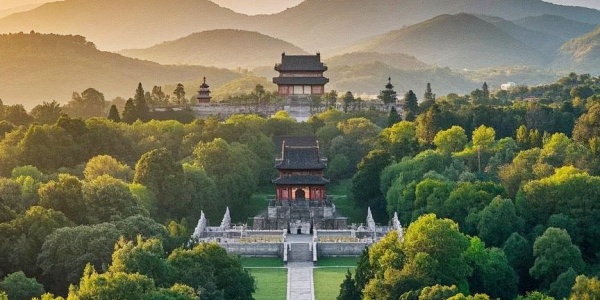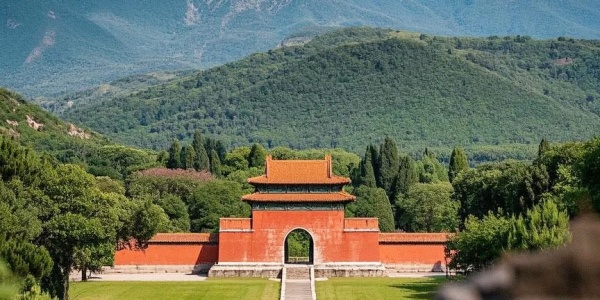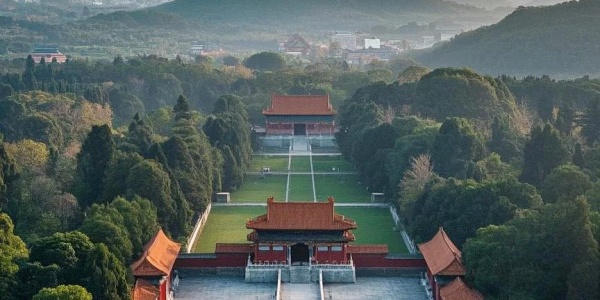When traveling in China, visiting places rich in history and cultural heritage always offers a profound sense of wonder and inspiration. As the nation’s capital, Beijing is home to numerous iconic landmarks, including the Ming Tombs, which attract countless domestic and international visitors with their unique charm. The Ming Tombs are not only the final resting place of ancient Chinese emperors but also a testament to their dedication to the nation. This article takes you on a journey through the Ming Tombs, uncovering the patriotic spirit of China’s ancient emperors.
1. The Ming Tombs: The Resting Place of Ancient Chinese Emperors

Located at the foot of Tianshou Mountain in the northern part of Beijing's Changping District, the Ming Tombs are the largest and best-preserved imperial mausoleum complex in China. They are the burial site of 13 emperors from the Ming Dynasty, including Emperor Yongle (Zhu Di), Emperor Hongxi (Zhu Gaochi), and Emperor Xuande (Zhu Zhanji). Each tomb is meticulously designed, with grand and majestic layouts that showcase the high level of architectural skill in ancient China.
2. The Patriotic Spirit of the Ming Dynasty: "No Marriage Alliances, No Tributes, and Emperors Guarding the Borders"

Throughout the Ming Dynasty, its emperors upheld a strong sense of national pride and responsibility, captured in their policies of “no marriage alliances, no tributes, and emperors guarding the borders.” These principles not only shaped the dynasty’s foreign relations but are also deeply reflected in the Ming Tombs:
● No Marriage Alliances: The emperors refused to secure peace through arranged marriages, safeguarding the nation’s dignity and independence.
● No Tributes: They declined to send tributes to foreign powers, asserting the strength and confidence of the Ming Dynasty.
● Emperors Guarding the Borders: The emperors personally defended the nation’s borders, demonstrating their commitment to protecting the country’s sovereignty.
Each tomb in the Ming Tombs serves as a silent witness to the unwavering patriotism and determination of these rulers, who devoted their lives to preserving the nation’s independence and integrity.
3. The Ming Tombs: A Meeting Point of History and Culture

As one of Beijing’s most famous landmarks, the Ming Tombs are a must-visit destination for travelers to China. The site offers not only a glimpse into the rich history and cultural heritage of the Ming Dynasty but also an appreciation of its unique architectural style and artistic value. Visitors can admire exquisite stone carvings, experience the grandeur of ancient imperial design, and gain insight into the patriotic spirit and moral principles upheld by the Ming emperors.
4. Discover the Charm of the Ming Tombs During Your Visit to China

A visit to the Ming Tombs provides an opportunity to explore the unique beauty and deep cultural significance of this royal mausoleum complex. Here, you can marvel at the architectural masterpieces, immerse yourself in the patriotic legacy of the Ming emperors, and enjoy the site’s tranquil natural surroundings. Encircled by lush mountains and dense greenery, the Ming Tombs offer a serene and picturesque environment that changes with the seasons, making it an ideal destination for visitors seeking both historical insight and natural beauty.
In conclusion, the Ming Tombs, as the final resting place of ancient Chinese emperors and a symbol of their patriotism, continue to captivate visitors with their unique charm and profound cultural heritage. When traveling in China, be sure to visit the Ming Tombs to experience the magnificence of this imperial site and the patriotic spirit of the Ming Dynasty. Here, you are certain to find moments of inspiration and reflection.
